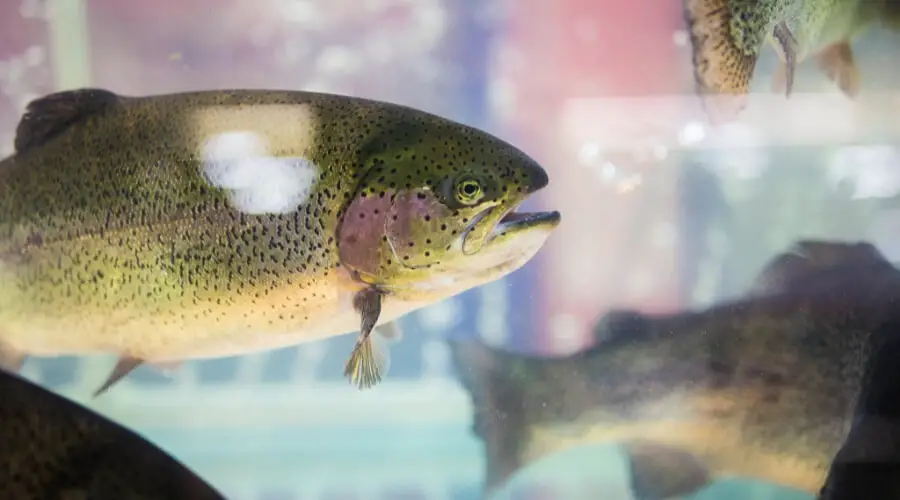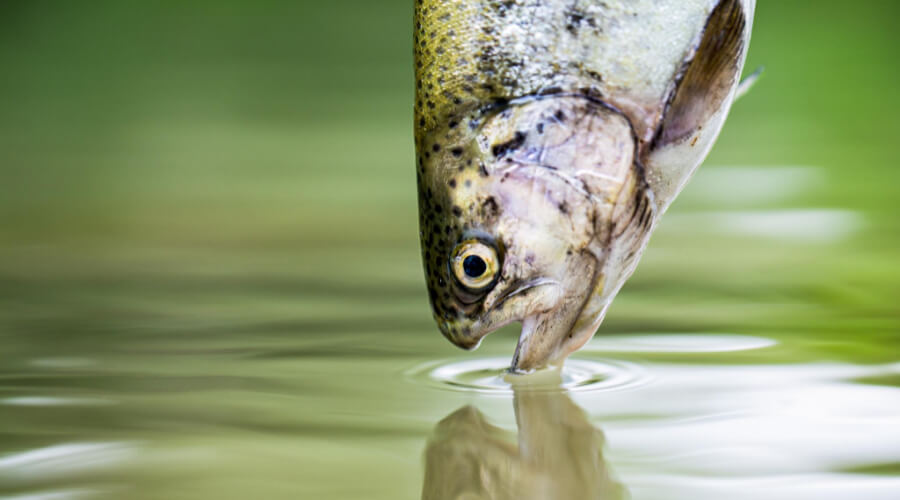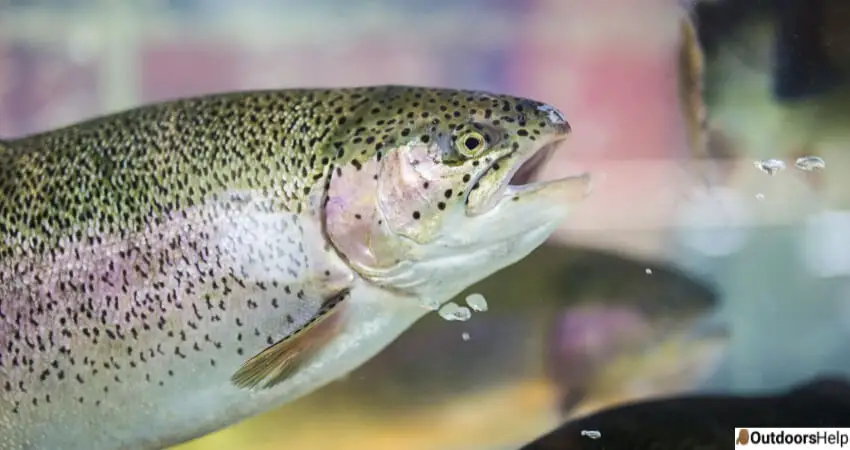Rainbow trouts are popular game fish in North America and are renowned for their colorful and attractive patterned skin., they can rapidly swim upstream to the west of the Rocky Mountains and are inherent to streams, rivers, and other freshwater bodies. They are selective and opportunistic at the same time, and they eat anything from crustaceans, algae, and insects to other trout. As an angler, knowing what rainbow trout eat is essential in choosing the perfect bait. Have you ever wondered what the rainbow trout eat? Stick through to the end as we provide answers to all your questions. We’ll take you through the fine details of the various types of aquatic insects and other types of food that are a major food source in their daily diet.
Rainbow trout eat aquatic insects like mayflies, midges, caddisflies, and stoneflies. They also eat algae, snails, fish and fish eggs, leeches, small fish, and side swimmers.
In both larval and adult stages, rainbow trout eat a variety of insects in the wild. They get a virtual conveyer belt of food floating down the river at the pools that form at the end of fast-moving water. As an angler, the knowledge of what they feed on is very useful when choosing your bait or lure. You can examine the reeds and rocks along the shoreline for emerging insects if you want to determine what they are feeding on.
Clinging to the rocks, you can often find discarded skins of a recently emerged nymph. Rainbow trouts can adapt to saltwater when necessary, but they prefer cool freshwater streams between 55 and 60 degrees, with natural cover and gravel bottoms. They are mainly bottom feeders eating worms, mollusks, and crustaceans.
They feed for several hours or in the afternoon on cloudy days, then drop back down after rising from deeper adjacent flats at dawn. Some continue feeding through the night as they return in the evening. The best places providing the most food in natural lakes are the largest shallow flats. You can find them at bays and shoreline flats with various substrates or a soft, sandy bottom that is best for nymphs and larvae. Unless no flats exist at those depths, prime depths are 4 to 8 feet. When they feed deeper, it often takes place just past the lip of the first major drop leading to these surface flats.
What Types Of Insects Do Rainbow Trouts Eat?

Insects originating from beneath the surface of the water are those eaten by the rainbow trout. They are not found on top of the rivers but all over them. Their main source of food is larvae and nymph found in almost every waterway. Frequently found right in the riffle, these insects love water that is rich in oxygen. In the water, insects like mayflies, midges, stoneflies, and caddisfly spend the vast majority of their lifespan. Are you curious to find out the various insects fed on by rainbow trouts? I’m sure you’ve come across some as an angler, but let’s look at each of them in detail.
| Type Of Insect: | Description: |
| Mayflies | In the aquatic version of the insect, their cycle begins as an egg that hatches into a nymph, and before they emerge from the water, it may last a year or two. To take flight, they float on the water and allow their wings time to dry. They assume the adult form in the last stage, known as a spinner stage when the dun molts the skin. |
| Stoneflies | They have no pupa stage but only three stages; egg, nymph, and adult stage. Their larvae can be quite large, ranging from half an inch to an inch and a half. Kaufman stoneflies, golden stones, and bead head stoneflies imitate the stage in a mass of different colored nymph patterns. They develop as adult flies hauling up to the shore and molting after finishing the nymph stage. |
| Caddisflies | They develop into adult flies after transitioning from egg to larva to pupa. To form a protective case for the insect, the case building caddisfly larva secretes a type of silk bonding together small pebbles and sticks. These flies can remain as larvae for as long as two years with the cased varieties sealing off their case and pupating inside when the larvae are ready. Where they’ll molt and merge as adults, they’ll chew their way out of the case and float up to the surface once fully developed. The insects do not feed after emerging, so the final stage never lasts long. The cycle begins all over again, and they breed, lay eggs, and die as the resulting eggs hatch in a few weeks. |
| Midges | The egg, larva, pupa, and adult are the four distinct stages of their life cycle. The larvae develop and thrive in slow water with a silty, muddy bottom covered in aquatic vegetation and debris as the adults lay their eggs in or over the water. They are found in lakes and other still water in various colors but red, olive, black, brown, and cream are the most common. With no noticeable body taper, their larvae look much like a thin helpless worm with distinct segmentation. Allowing them to survive in polluted environments or littoral areas dewatered occasionally is the red color in some species, coming from an internal store of oxygen-rich hemoglobin. |
Other Types Of Food Eaten By The Rainbow Trout:

If you were wondering, there are other types of food enjoyed by the rainbow trouts in the water besides aquatic insects. Eating invertebrate larvae as it flows downstream saves energy when feeding by remaining static in a stream with open mouths.
1. Terrestrial Insects:
Their diet also includes terrestrial insects such as crickets, grasshoppers, and ants. You’ll find them in plenty when examining the shoreline at various times of the year.
2. Crustaceans Such As Crayfish:
Part of the diet of rainbow trout is also formed by freshwater shrimp, scuds, or crayfish. There are soft baits imitating crayfish for the spin fisherman, and both scuds and crayfish use several fly patterns.
3. Leeches:
The fly pattern used is the wooly bugger either in olive, black, or brown to imitate them. Rainbow trouts devour them readily, and what a local leech population looks like can be found when you overturn rocks in your fishing spot and look through the pools. Spin casting can also be done using these fly patterns.
4. Fish And Fish Eggs:
Rainbow trout feed on their species as well as other fishes eggs’. Including yellow perch and other trout, they will eat white fish eggs, and salmon, in addition to other fish sized differently. As they age, they can become more piscivorous, and an effective way of catching them is spin-casting crankbaits in various colors.
Conclusion:
After reading through this article to the end, I hope all the facts and information provided have answered all the questions you had. The diet of rainbow trouts ranges from a variety of insects to fish and fish eggs, but that doesn’t mean that they’re not eaten by other fish as well. They are preyed on by larger fish-eating birds like kingfishers, herons, and mammals like humans, river otters, raccoons, and American Black bears. Resembling the water from below and the river bottom from above, they swim at high speeds and benefit from their silver belly and bluish-green back to avoid predators.

